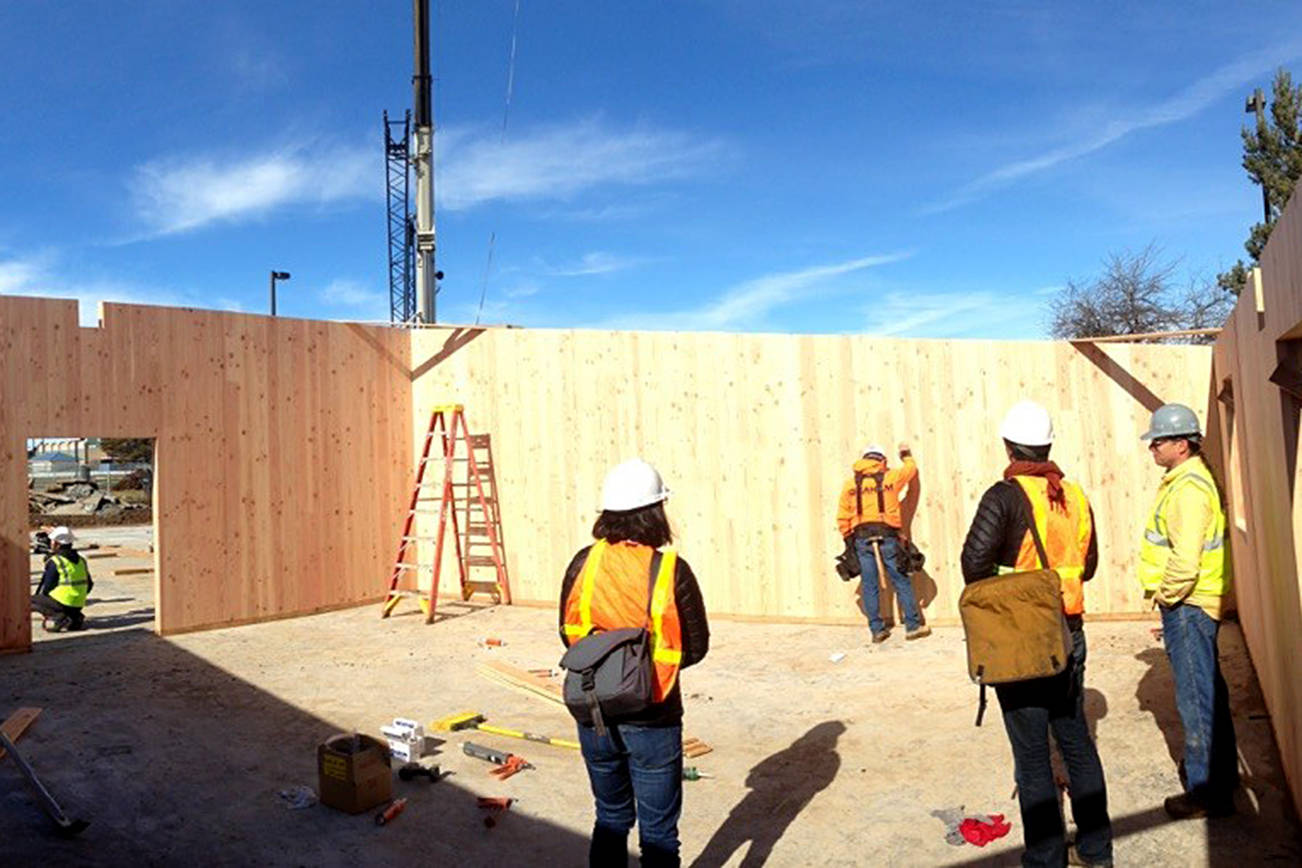The state construction budget proposed by the House of Representatives would invest more than $1 billion into building schools in every corner of Washington state, according to Rep. Steve Tharinger, D-Sequim.
“This budget will put people to work from Aberdeen to Spokane, building local schools for our 1.1 million students,” said Tharinger, chair of the House Capital Budget Committee. “It’s a bipartisan budget, with Democrats and Republicans working together to find ways of making our communities stronger in every corner of the state.”
A number of local projects are in the budget, which still has to be approved by the full Legislature and signed by the governor.
Some local appropriations include:
• Between $1 million and $2.5 million for Westport Marina dredging.
• $1,750,000 from the State Building Construction Fund for the Gateway Center in Aberdeen.
• Replacement of non-compliant comfort stations in Ocean City, $1,365,000.
• $531,000 for coastal rehabilitation work on the north shore of Grays Harbor.
• $373,000 for Aberdeen landslide repairs.
• More than $2 million for Fry Creek restoration and flood reduction efforts in Aberdeen.
• $250,000 for improvements to the Hoquiam Library.
• Roof replacement on the Coastal Harvest facility in Hoquiam, $206,000.
• Upper Quinault River restoration, $65,000.
• $1,041,000 for Hoh and Clearwater river restoration.
• Funding to design and construct the water intakes from the Naselle River to make them compliant with current federal and state fish screening and fish passage criteria, including the renovation of the Naselle Hatchery to maintain hatchery production into the Naselle River and the Willapa Bay Basin, $8 million.
• $2,032,000 to replace heat exchangers in two housing units at Stafford Creek Corrections Center with hydronic boilers. Maintenance staff have repaired visible cracks in the heat exchanger pipes, but remain concerned that damage to inaccessible areas of pipe may result in dangerous levels of carbon monoxide in the housing units.
• Lower Satsop restoration and reduced bank erosion project, $1,030,000.
• Funding to relocate Twin Harbors State Park camping sites that are vulnerable to flooding to the west side of the highway at the Grayland Beach and restore the current Twin Harbors State Park sites to wetlands. The reorganized campground at the Grayland Beach include the two new restrooms, yurt camping area and RV hookups. Design and permit will occur during the 2017-19 biennium with relocation and construction the following biennium. Proposed appropriation, $471,000.
• $2,425,000 to remove and improve fish passage barriers, improve stream habitat by removing in-stream structures and adding large woody debris and upgrade the Forks Creek Hatchery to current state and federal standards for fish passage and screening criteria. This project will open 28 miles of spawning and rearing habitat for chum, Chinook and coho salmon, steelhead and cutthroat trout.
• $696,000 for the Legacy Pavillion at Lake Sylvia State Park in Montesano.
— Moon Island Road implementation and design, $400,000.
Here are some of the statewide appropriations in House Bill 1075:
• $15.5 million to build early learning facilities
• $30 million for rural and distressed K-12 schools
• $800 million for state colleges and universities, with $433 million for community and technical colleges
• $15 million for science, technology, engineering and math grants at K-12 schools
“The Seattle-Tacoma-Everett area is booming, but out in timber and farm country, families and businesses are still fighting to recover from the Great Recession,” Tharinger said. “This budget gives rural Washington a boost.”
The two-year construction budget keeps $105 million in reserve for a supplemental capital budget in 2018.
“Families First is the phrase that guided us when writing the state operating budget and it’s the same value system when it comes to the capital budget,” Tharinger said. “We’re working together, as Democrats and Republicans, to build a better Washington for our kids and grandkids.”
Tharinger said the next steps are a public hearing on the budget, then a vote in committee and a vote on the House floor. Once the budget has passed the House, a final bipartisan construction budget will be negotiated between the House and Senate.



